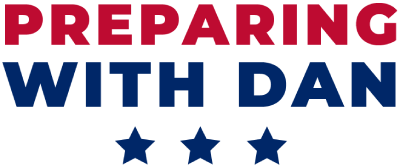Being financially prepared is key to handling unexpected money troubles. It gives people and families the confidence and resources to deal with economic changes. It’s about knowing and using strategies to keep your finances stable and safe.
Life can throw surprises, but having a solid financial plan helps you face them calmly. It means you’re ready for anything without feeling overwhelmed.
Many people aren’t ready for money emergencies, with 60% not having enough saved. Starting an emergency fund, even with small amounts, helps build financial strength. Cities in the Philippines and Sri Lanka show how important planning is for financial safety.
Creating a strong budget is the first step to financial stability. It helps reduce the shock of sudden money problems.
Key Takeaways
- Financial preparedness is essential for economic stability in unpredictable times.
- An emergency fund should ideally cover three months’ worth of living expenses.
- Small, consistent contributions to an emergency fund build up over time.
- Countries worldwide allocate significant funds for preparedness and disaster management.
- Effective financial preparedness combines risk reduction, planning, and timely resource allocation.
Understanding Financial Preparedness
Financial preparedness means being ready for any financial surprise. It’s about having a plan for emergencies, smart investments, and controlling your money. This helps avoid debt and keeps you financially stable.
What Is Financial Preparedness?
Being financially prepared means you’re ready for any money crisis. It’s about using financial strategies and keeping important documents safe. It also means having money set aside for emergencies. This way, you’re not just avoiding risks but also planning for a secure future.
Importance of Financial Preparedness
Everyone in America faces money challenges after a disaster. A good plan can really help. Using an Emergency Financial First Aid Kit (EFFAK) and getting the right insurance are key. They help protect you from economic uncertainty and scams that prey on fear.
Key Components of Financial Preparedness
Financial preparedness has several important parts. These include:
- Budgeting: Making and sticking to a budget to manage money well.
- Saving: Building an emergency fund and keeping it topped up with cash.
- Investing: Putting money into different places to grow your wealth over time.
- Insurance: Getting enough insurance for unexpected events like disasters and cyber attacks.
| Component | Description |
|---|---|
| Budgeting | Planning your income and expenses to avoid debt. |
| Saving | Putting money into an emergency fund for tough times. |
| Investing | Smartly investing money to grow your wealth. |
| Insurance | Getting enough insurance for unexpected events. |
Assessing Your Current Financial Situation
Getting a handle on your finances starts with a detailed financial assessment. It’s key to track your income, check your debt, and look at your savings. This gives you a clear view of your financial health and where you can do better.
It’s smart to review your financial progress every year. This is often tied to big life events like getting married, getting divorced, or changing jobs.
Tracking Income and Expenses
Tracking your income and expenses is a vital part of financial health. Many people don’t know how much they make or spend each month. This can cause them to spend too much and struggle financially.
By keeping a detailed record of all income and expenses, you can spot spending patterns. This helps you cut down on unnecessary spending. It also helps you save more and be better prepared financially.
Evaluating Debt Levels
Managing debt starts with knowing how much you owe. In 2023, the average American household had about $16,000 in debt. It’s important to understand your debt-to-income ratio to see how healthy your finances are.
There are different ways to pay off debt, like the snowball method and avalanche method. These methods focus on different strategies for tackling debt. Checking your credit reports from Equifax, Experian, and TransUnion also helps you understand your credit health. This is a big part of managing debt.
Analyzing Savings and Investments
A good savings analysis looks at both short-term savings and long-term investments. It’s wise to have an emergency fund that covers three to six months of living costs. This helps in tough financial times.
Experts say to save 10% to 20% of your income before taxes for retirement. Make sure to contribute enough to get your employer’s match in 401(k) plans. Regularly checking your retirement and savings accounts helps make sure they match your goals and risk level. A detailed savings analysis helps grow your finances and stability.
Setting Financial Goals
Setting clear financial goals is key to being prepared. Knowing the difference between short-term and long-term goals helps. It guides your financial planning and balances your future.
Short-Term vs. Long-Term Goals
Short-term goals are things you can do in a year, like making a budget or paying off debt. Experts say start with saving $500 to $1,000. Then, aim to save enough for three to six months of living expenses.
Long-term goals, like saving for retirement or buying a home, need more time. They often take years to achieve.
SMART Goals Framework
To make sure your goals are clear and reachable, use the SMART goal framework:
- Specific: Clearly define what you want to achieve.
- Measurable: Track your progress with numbers.
- Achievable: Set goals that fit your financial situation.
- Relevant: Make sure your goals match your financial plans.
- Time-bound: Set a deadline for your goals.
Regularly Reviewing Goals
It’s important to regularly check your financial goals. About 40% of people don’t review their goals often. This can slow down your financial growth.
Review your goals at least once a year. This helps you adjust for changes in income, expenses, or life events. It keeps your financial planning on track.
Creating an Emergency Fund
Building an emergency fund is key to being financially ready. It’s a safety net for unexpected costs like medical bills or job loss. Saving a set amount helps you handle emergencies without debt. Let’s look at how much to save, the best ways to save, and where to keep your fund.
How Much Should You Save?
Experts say aim for 3-6 months’ living expenses in your fund. This gives you a good buffer for surprises. Those with less savings often turn to debt when emergencies hit.
Having clear savings goals helps you save more. Even small amounts, like $5 a week, can grow your fund. Automatic transfers, starting at $5, make saving easier.
Best Practices for Saving
To grow your fund and stay financially secure, follow these tips:
- Automate Your Savings: Automatic savings lead to consistent saving with less effort.
- Utilize Windfalls Wisely: Use big money, like tax refunds, for your fund, not for spending.
- Start Small: Start with saving for one month and increase to three or six. This makes saving feel less overwhelming.

Where to Keep Your Emergency Fund
Your fund should be easy to reach but separate from other savings. Here are good places to keep it:
- High-Yield Savings Accounts: They offer better interest rates and are liquid, perfect for emergencies.
- Bank or Credit Union Accounts: These are safe and let you access your money quickly when needed.
In summary, having enough in your emergency fund is vital for financial stability. By saving wisely and choosing the right place for your fund, you can create a strong financial safety net.
Insurance: A Safety Net
Insurance is a key financial safety net. It offers protection against unexpected events. This includes healthcare needs, accidents, and other surprises. With enough insurance, you and your family won’t face huge financial losses.
Types of Insurance to Consider
It’s important to look into different insurance types:
- Health Insurance: It can save you from huge medical bills.
- Life Insurance: A $500,000 term life policy for a 35-year-old might cost $30-$50 a month. It helps cover funeral costs and debts.
- Auto Insurance: It’s needed in some places. It helps with repair or medical bills after an accident.
- Homeowners/Renters Insurance: It protects your property and belongings from damage or theft.
- Disability Insurance: It can replace 60-70% of your income if you become disabled.
- Long-Term Care Insurance: It covers nursing home or in-home care costs as you age.
- Pet Insurance: It helps with vet bills, medications, and surgeries for your pets.
- Umbrella Insurance: It adds an extra $1 million in liability coverage beyond your home and auto policies.
Benefits of Adequate Coverage
Having enough insurance means you won’t be hit hard by sudden costs. Over 50% of people feel unready for life’s surprises. Here’s why it’s good:
- It protects you from huge medical bills, which have gone up over 200% in 20 years.
- It helps manage risks, so you don’t face huge bills on your own.
- It gives you peace of mind for accidents, theft, and income loss due to disability.
- It helps support your dependents by planning for funeral costs and debts through life insurance.
How to Assess Your Insurance Needs
Checking your insurance needs is a continuous task. Almost 1 in 3 people don’t review their policies every year. Here’s how to do it right:
- Consider Life Changes: Update your policies with big life events like marriage, kids, or a new home.
- Evaluate Current Coverage: Make sure it fits your current financial situation and lifestyle.
- Review Policy Details: Check if your policy’s terms, like coverage amounts and premiums, are good for you.
- Seek Professional Advice: Talk to insurance advisors to find any gaps in your coverage.
Insurance is key for both immediate and long-term financial safety. It brings peace of mind and security for you and your family.
Budgeting for Stability
Starting your journey to financial stability begins with a solid budget. Budgeting helps you see where your money goes and manage it better. It’s key to know how to create, use, and tweak your budget for lasting financial health. Let’s dive into the important steps and tools for effective budgeting.
Steps to Build a Successful Budget
Creating a good budget takes a few important steps. First, track all your income and spending carefully. Use data from the past month or up to three months to predict future costs. The 50/30/20 budgeting rule is a good start, dividing your money into needs, wants, and savings.
Or, try the 70/20/10 method for a different approach. It suggests spending 70% on needs and wants, 20% on savings and investments, and 10% on debts or donations. Also, keep your housing costs under 28% of your monthly income for stability. Adjust your budget as needed to meet your goals and use the tools you have.
“A budget can utilize past spending data, typically covering the previous month or up to three months, to make informed predictions about future expenses.”
Tools and Apps for Budgeting
Many budgeting tools and apps can make managing money easier. Apps like You Need a Budget (YNAB) help track spending, set savings goals, and adjust your budget. YNAB, for example, helps build an emergency fund by setting small savings targets, like saving $50 weekly.
Using technology in your budgeting can lead to better financial management and stability.
Adjusting Your Budget Over Time
It’s vital to regularly check and tweak your budget to keep it aligned with your financial goals and life changes. Regular budget reviews help track progress, spot issues, and make needed changes. Adding extra spending controls can help during big financial changes.
Adjustments might include changing how you spend money or using new financial tools and trends. Remember, a budget should grow with you and your finances.
| Budgeting Rule | Allocation |
|---|---|
| 50/30/20 Rule | 50% Needs, 30% Wants, 20% Savings |
| 70/20/10 Method | 70% Necessities, 20% Investments, 10% Debts |
Retirement Planning
Planning for retirement is key to a stable financial future. Starting early can greatly increase your savings. This ensures you enjoy your golden years as you wish. Knowing your options and using smart investment strategies are vital for a solid plan.
Importance of Early Retirement Planning
Experts say you’ll need 70% of your income to live well in retirement. So, starting to save early is very important. For example, saving $250 a month for two years at 4% interest can grow to over $6,200. Also, about 10,000 Baby Boomers retire every day, showing the need for early planning.
Different Retirement Accounts
There are many retirement accounts to choose from. Here are a few:
- 401(k) Plans: Many employers offer these. You can contribute pre-tax income, with limits set by law.
- Individual Retirement Accounts (IRAs): In 2017, you could contribute up to $5,500 if under 50, or $6,500 if over. IRAs offer tax benefits to grow your savings.
- Deferred Compensation Plans: Plans like 457(b) and 403(b) let you defer up to $18,000 in 2017, with an extra $6,000 for those 50 and older.
Strategies for Growing Your Retirement Fund
To build a strong retirement fund, consider these strategies:
- Regular Contributions: Saving regularly is key. Even small amounts can add up over time.
- Diversified Investments: Spread your investments to reduce risks. A mix of stocks, bonds, and mutual funds is good.
- Understanding Benefits: Social Security can replace 35% to 40% of your earnings. Knowing this can help plan your retirement better.
| Retirement Account | Annual Contribution Limit (under 50) | Annual Contribution Limit (50+) | Catch-Up Provision |
|---|---|---|---|
| 401(k) Plans | $18,000 | $24,000 | $6,000 |
| IRAs | $5,500 | $6,500 | $1,000 |
| 457(b) and 403(b) Plans | $18,000 | $24,000 | $6,000 |
Today’s retirees can expect to live another 20 years on average. This means you need to plan for inflation and other factors. Only 36% of workers feel sure they’ll have enough for retirement. So, it’s important to use different investment strategies and keep saving regularly for a secure future.
Investing Wisely
Investing is a key way to grow your money and be ready for the future. It means knowing about different ways to invest and seeing the chance for big gains. But, it’s also important to think about managing risks.

Types of Investments to Consider
There are many kinds of investments out there:
- Stocks: These are shares in a company. They might make you a lot of money, but they can also be risky.
- Bonds: These are like loans to governments or companies. They offer lower returns but are safer.
- Mutual Funds: These are pools of money from many investors. They’re managed by experts.
- Real Estate: Investing in property can make money over time. You can also get rental income.
- Low-Cost Index Funds: These funds let you invest in many companies. They’re easy to manage and cost less.
Risks and Rewards of Investing
It’s important to know the risks and benefits of each investment:
- Stocks can make a lot of money, but their value can change a lot.
- Bonds are safer but might not make as much money over time.
- Mutual funds spread out your risk but have fees and can be affected by the market.
- Real Estate can be stable, but it needs a lot of money upfront and ongoing costs.
- Index Funds are safer because they spread out your risk. They’re good for beginners.
How to Start Investing
Beginners should start small and grow their investments as they learn more:
- Start with Low-Risk Investments: Begin with bonds or low-cost index funds.
- Set Clear Financial Goals: Know what you want to achieve with your investments.
- Educate Yourself: Use books, articles, and advice from experts.
- Practice Risk Management: Spread out your investments and keep an emergency fund.
- Review Regularly: Check and adjust your portfolio as needed.
Building Credit and Managing Debt
Good credit is key to strong financial health. It boosts your borrowing power and helps with housing and other chances. Understanding your credit score, improving it, and managing debt well are vital for stability.
Understanding Your Credit Score
Your credit score is vital for credit management. It shows how creditworthy you are. It’s based on several things:
- Payment History: Makes up 30% to 35% of your score. Paying on time is important.
- Credit Utilization: Should be under 30% of your total limits.
- Length of Credit History: Keeping accounts open for six months or more helps.
Tools like Experian Boost can add utility and cell phone bills to your report. But it only affects Experian’s models.
Strategies for Improving Credit
To improve your credit score, take a proactive credit management approach:
- Timely Payments: Make consistent, on-time payments to build a good history.
- Monitor Credit Reports: Get free weekly checks through AnnualCreditReport.com.
- Space Out Applications: Apply for new credit at least six months apart to avoid score drops.
- Use Secured Credit Cards: These cards, starting with a $200 deposit, can help build credit responsibly.
Debt Repayment Strategies
Effective debt reduction strategies are essential for managing your finances:
- Snowball Method: Pay off smaller debts first to gain momentum.
- Avalanche Method: Focus on high-interest debts to save on interest.
- Debt Consolidation: Combine loans for lower interest rates and easier payments.
29% use the snowball method, while 21% choose the avalanche method. The right strategy for you will help reduce debt and improve your financial health.
Ongoing Financial Education
It’s key to keep learning about money to stay smart about the economy. Knowing the latest news helps you make better choices with your money.
Resources for Financial Learning
There are many ways to get better at managing money. Here are some great options:
- Books: “Rich Dad Poor Dad” by Robert Kiyosaki and “The Total Money Makeover” by Dave Ramsey are good starts.
- Workshops and Seminars: Going to local money talks helps you learn about new money tips and trends.
- Online Courses: Sites like Coursera and Udemy have courses on money and investing.
- Financial Advisors: Talking to a pro can give you advice made just for you.
Staying Updated on Financial Trends
Knowing what’s happening in the economy is important. Here’s how to stay in the loop:
- Financial News: The Wall Street Journal and Bloomberg give you the latest news.
- Market Reports: The Federal Reserve’s reports give deep insights into the economy.
- Social Media: Following money experts on Twitter or LinkedIn can give you updates fast.
The Role of Financial Advisors
Financial advisors are key in helping you understand money. They offer advice to help you deal with the economy. Here’s how they can help:
- Personalized Plans: Advisors make plans that fit your money goals.
- Risk Management: They help you see and manage risks based on the economy.
- Ongoing Support: They keep checking in to make sure your money plans are working.
Learning about money all the time is very important. Using both learning on your own and getting advice from experts can really help. It makes sure you’re ready for any money changes or challenges.
Establishing a Support Network
Creating a strong support network is key to staying financially ready for surprises. It should include both experts and community groups. These help with financial advice and support, making families and individuals stronger.
Connecting with Financial Professionals
It’s important to get help from financial experts like certified planners. They give advice that fits your specific needs. Their help can improve how you manage money and prepare for the future.
Engaging Family in Financial Discussions
Talking openly about money with your family is vital. It helps everyone work together towards financial goals. This way, everyone knows their part in keeping the family financially stable.
Joining Community Resources
Being part of your community is also important. There are many resources like financial classes and support groups. They offer valuable help and information, helping you stay on track financially.
Here’s a table that summarizes key elements for establishing an effective support network:
| Element | Description | Benefits |
|---|---|---|
| Financial Professionals | Certified experts providing personalized financial advice and strategies | Ensures tailored financial planning and better asset management |
| Family Engagement | Open communication within the family about financial matters | Improves collective financial goal alignment and support |
| Community Resources | Local programs and support groups providing financial education and assistance | Enhances knowledge, reduces isolation, and strengthens network |
Reviewing and Adjusting Your Plan
Regularly checking your finances is key to reaching your goals and adjusting to life’s changes. About 70% of people say big life events like getting married or changing jobs mean they need to update their plans. These reviews help keep your goals in sight and spot new chances as they come up. In fact, 65% of people find new investment chances through regular financial checks.
Importance of Regular Reviews
Regular financial checks can really boost your financial health. Yet, 54% of folks don’t keep an eye on their financial goals, missing out on chances. Those who do check in regularly are 30% more likely to hit their savings targets. It’s like 72% of financial pros say, regular checks keep your strategies fresh.
By doing these reviews, you make sure you’re not just on track but also using your money wisely.
When to Make Adjustments
It’s time to tweak your financial plan after big life events. Things like getting married, starting a new job, having a kid, or losing someone close need a financial check-up. You might need to update your insurance, change your investments, or adjust your savings goals.
Research shows 38% of people don’t have enough insurance, showing how important these reviews are. Also, paying off debts can save you up to 25% on interest, making regular checks even more vital.
Setting Up Accountability Measures
Staying true to your financial plan needs accountability. Working with financial advisors or using tracking tools can provide the support and structure you need. About 61% of clients with advisors say regular checks have greatly improved their finances.
Having regular meetings with a pro or using apps to track your finances keeps your goals in focus. Use these tools to keep your financial plan strong and ready for any financial hurdles.
Source Links
- https://www.unisdr.org/campaign/resilientcities/home/article/essential-three-strengthen-financial-capacity-for-resilience.html
- https://camino.org/building-financial-resilience-strategies-for-creating-an-emergency-fund/
- https://documents1.worldbank.org/curated/en/099732511072314227/pdf/IDU0893ba78605dc8048f5091f70893ee26173ef.pdf
- https://www.ready.gov/financial-preparedness
- https://www.aferm.org/erm_feed/the-importance-of-financial-disaster-preparedness/
- https://banking.colorado.gov/consumers/financial-preparedness-in-times-of-a-disaster
- https://www.investopedia.com/personal-finance/how-conduct-financial-checkup/
- https://www.maxprog.com/blog/how-to-determine-your-current-financial-status/
- https://www.prosper.com/blog/how-to-give-yourself-a-financial-checkup
- https://www.investopedia.com/articles/personal-finance/100516/setting-financial-goals/
- https://www.usbank.com/wealth-management/financial-perspectives/financial-planning/how-to-set-financial-goals.html
- https://www.consumerfinance.gov/an-essential-guide-to-building-an-emergency-fund/
- https://www.ready.gov/sites/default/files/2021-01/ready_financial-emergency_info-sheet.pdf
- https://www.securian.com/insights-tools/articles/5-steps-to-building-an-emergency-fund.html
- https://www.carterwealth.com/insights/the-role-of-insurance-in-a-comprehensive-financial-plan/
- https://www.vectrabank.com/personal/community/two-cents-blog/A-Guide-to-Insurance-in-Financial-Planning/
- https://www.investopedia.com/financial-edge/1109/6-reasons-why-you-need-a-budget.aspx
- https://www.resourcefulfinancepro.com/articles/finance-budgeting-best-practices/
- https://www.osc.ny.gov/retirement/publications/straight-talk-about-financial-planning-your-retirement
- https://www.umassmed.edu/ofa/reflections/retirement/edition3/
- https://dfpi.ca.gov/wp-content/uploads/sites/337/2019/06/8_Tips_for_Financial_Success.pdf
- https://medium.com/@mario.solis/financial-preparedness-how-to-save-and-invest-in-uncertain-times-7f7e6485e777
- https://www.nerdwallet.com/article/finance/how-to-build-credit
- https://blog.umb.com/personal-banking-tips-debt-management/
- https://pensionresearchcouncil.wharton.upenn.edu/wp-content/uploads/2016/09/BWP2014-01.pdf
- https://home.treasury.gov/policy-issues/consumer-policy/financial-literacy-and-education-commission
- https://www.asset-map.com/blog/special-needs-financial-planning
- https://extension.umaine.edu/publications/2026e/
- https://planningalt.com/insights/navigating-the-unpredictable
- https://www.genplangrp.com/2024/01/03/the-importance-of-regularly-reviewing-and-adjusting-your-financial-plan/
- https://www.nerdwallet.com/article/investing/what-is-a-financial-plan

